- Call us: 01444 237070
- Contact Us
- Stores
- Sign In / Register
- Black Friday Deals
-
- Back
- Used Cameras
- Used Accessories
- Used Lenses
- Used Video
- Used Film Equipment
- Used Stock Alert
- Used Blank Test
- Sell or Part Exchange
- All Used Black Friday Deals
- Used Clearance
- Recently Added Used Equipment
- Park Picks
- Faulty
- Trade-In
- Blog
- New in
- Call us
- Contact us
- Stores
- Sign in
- Categories
- Tips & Inspiration
- Reviews
- News
- Events
- Features
- Buying Guides
- Competitions
Looking After Camera Equipment for Students
Looking after your camera and lenses is easier than it sounds, and doing so will help your gear last longer, work better, and save you money in the long run. Whether you’re using a hand-me-down DSLR, a second-hand mirrorless camera, or your first film camera, some basic maintenance can go a really long way.
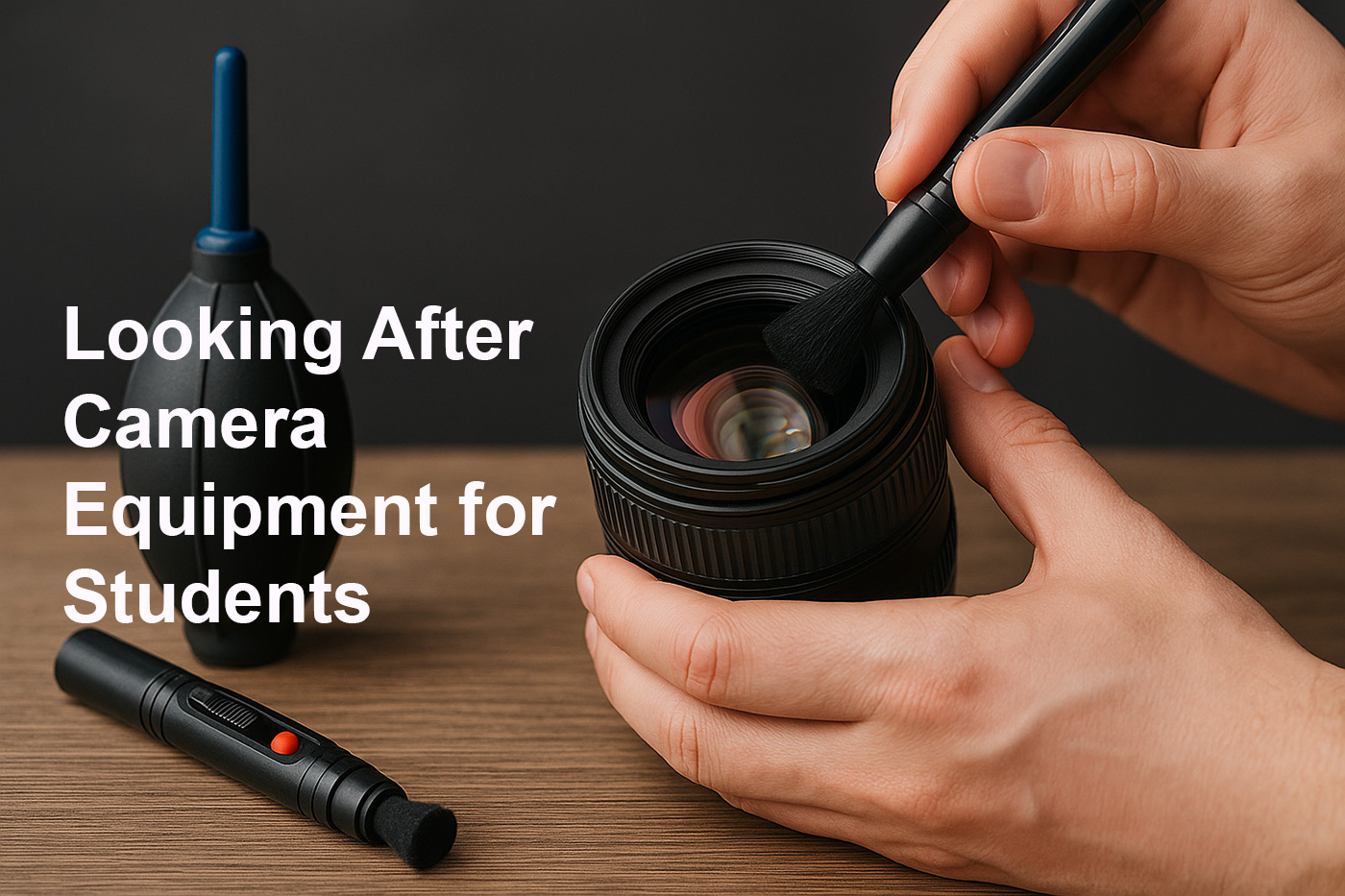
This guide explores a few simple ways to care for your camera equipment properly, with tips and advice for students who want to keep their gear clean, working and ready to use.
Join us as we explore everyday camera maintenance and learn how to clean gear and keep it safe while travelling. Keeping your camera clean is one of the simplest ways to make sure it keeps working properly, as dust and fingerprints on the lens or sensor can affect image quality, and dirt around buttons or in the viewfinder can make the camera harder to use over time.

Cleaning Accessories
A few basic accessories are useful to have. A camera cleaning kit might include a blower, which is ideal for general removing of dust from the lens or camera body without touching anything. A kit will also have a microfibre cloth to help clean smudges from the lens or LCD without scratching it.
Remember that you should always avoid using your clothing, tissues or anything abrasive, as this could scratch the camera or lens. A soft lens brush is another handy tool for sweeping dust out of smaller crevices, like around dials and the lens mount.
For tougher marks, lens cleaning fluid can be used sparingly once applied to a cloth, not directly onto the lens. Cleaning wipes for screens are also useful if you shoot in messy or wet conditions, or just got fingerprints all over the screen.
You don’t necessarily need a complete camera lens cleaning kit at once, but a few well-chosen items will help maintain your gear regularly and avoid problems later on. Take a look at our camera cleaning accessories to see what’s available and decide what’s worth adding to your own kit.
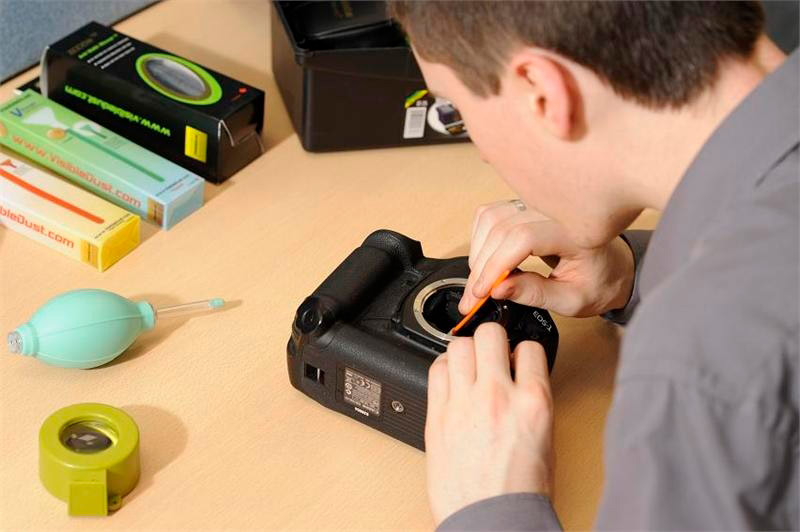
When and Why You Need Camera Sensor Cleaning
If you’re using a mirrorless or DSLR camera with interchangeable lenses, you’ll eventually begin to see dust spots on your photos, which become especially noticeable in bright skies or plain backgrounds. These often come from tiny bits of dust that get inside the camera and land on the image sensor.
Once they’re there, they won’t go away with lens cleaning, and despite some cameras having built-in sensor cleaning systems, they don’t always remove everything effectively. You can clean the sensor yourself with the right tools, but it’s delicate and easy to get wrong if you haven’t done it before. That’s why many photographers, especially if they’re just starting out might choose to have it professionally cleaned.
At Park Cameras, we offer a camera sensor cleaning service, which is carried out by trained technicians in our in-store lab. If you’re seeing persistent dust spots or if your camera hasn’t had a clean in a while, this is a good idea to do. If you’re not sure whether your sensor needs cleaning, take a photo of a plain wall or sky at a narrow aperture (like f/16) and see if there are any dark spots. That’s usually a sign it’s time.
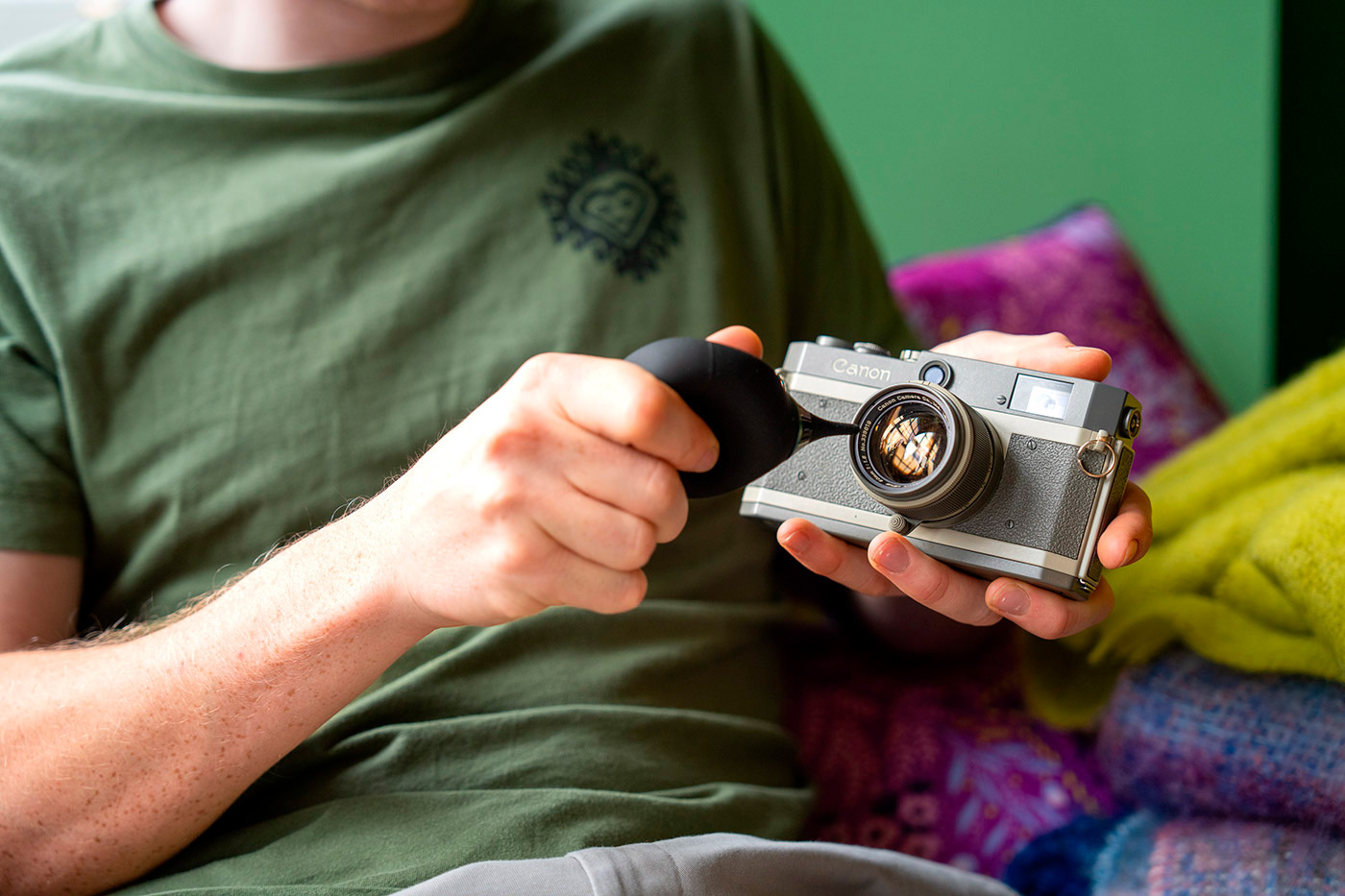
Silica Gels Protect From Moisture
Silica gel packets often turn up in new camera boxes or in used kit packaging, but they’re not just there to take up space. These small sachets absorb moisture from the air, which can help to prevent condensation, mould and corrosion, which is especially useful when storing your camera equipment for long periods or in damp conditions.
Cameras, lenses and electronics don’t get on well with humidity, and if moisture builds up inside a lens or body, it can lead to problems like fogging, sticky buttons or even fungus growth on the lens elements. Silica gels will help to reduce that risk by keeping the air in your camera bag or storage box dry. Use around 5g of silica gel for every cubic foot, depending on the humidity levels.
They’re cheap, don’t take up much space, and last for a while before needing to be replaced. You can also keep a few silica gel packets in your camera bag, lens case, or anywhere you store your gear, becoming part of your normal kit storage.
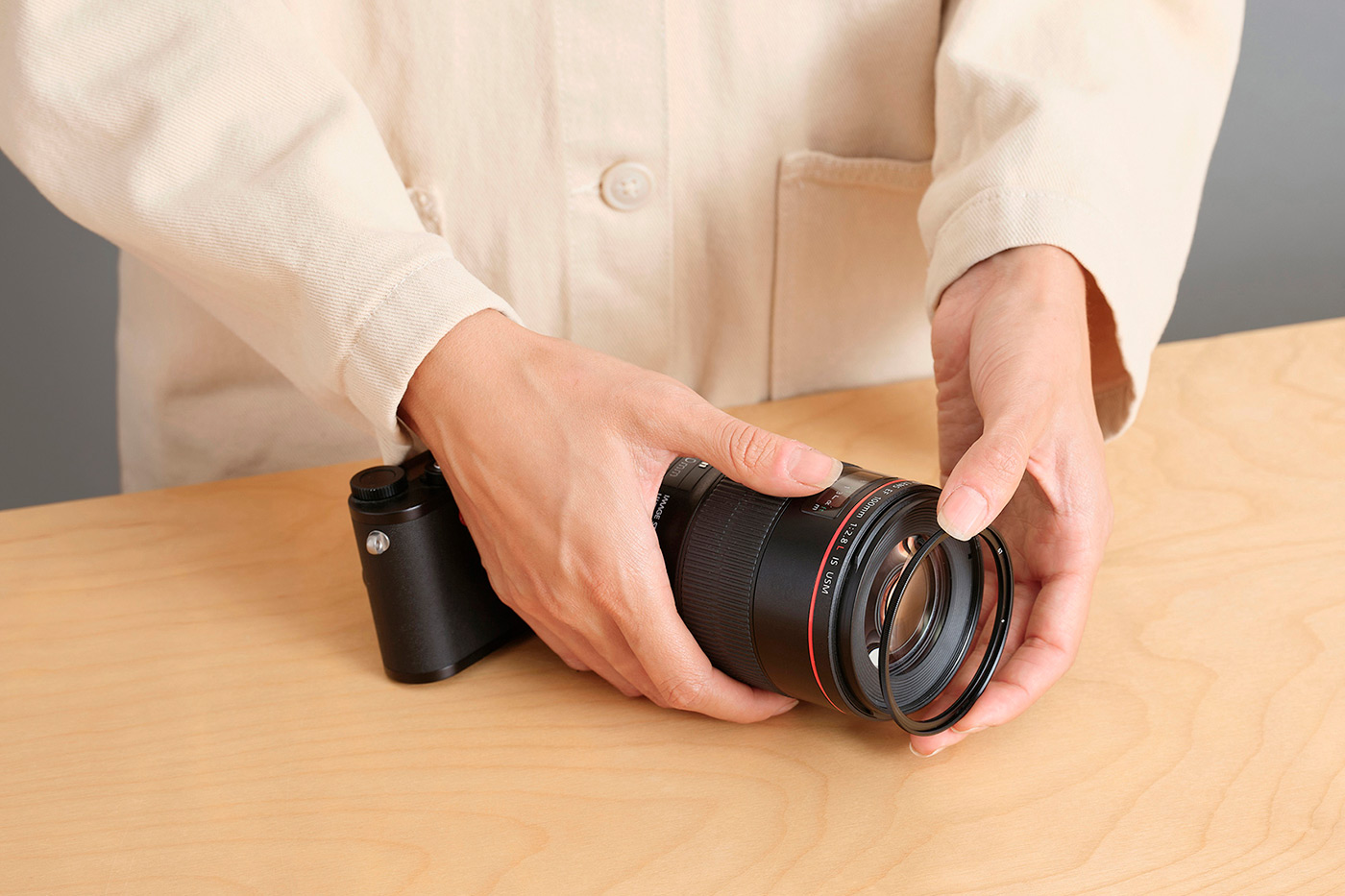
Do You Need a UV Filter?
UV filters are clear glass filters that screw onto the front of a camera lens. They were originally used to block ultraviolet light, especially when shooting on analogue film. Modern digital sensors are less sensitive to UV, so the main reason people use them now is to protect the front lens element from scratches, dust, or accidental scrapes.
For students, beginners, and anyone really, a UV filter can offer peace of mind, especially if you’re borrowing kit, shooting outdoors, or using second-hand lenses that may already show signs of wear. If a UV filter gets scratched, it’s much cheaper to replace than repairing a damaged lens!
That said, not everyone uses one. A poorly made UV filter can reduce image quality, add glare, or make colours look slightly off. If you decide to use one, it’s worth looking for a good-quality, multi-coated version that won’t interfere with your photos.
Some photographers only use UV filters when needed, such as in dusty or wet environments, and will remove them otherwise. Others photographers leave them on all the time. There’s no rule, but it’s worth understanding the benefits and drawbacks before deciding. For more guidance, see our UV protection lens filter guide, which explains the pros and cons of a UV filter in more detail.
![]()
Using a Tracker Device
Camera equipment is valuable and you’ll often carry it in public, so it’s worth thinking about how to keep it safe while out and about. Many camera bags and backpacks now include a hidden pocket for a tracker, like an Apple AirTag or similar Bluetooth tracking device. We carry POP Tracking Tags from Chipolo, which you can get in various colours like green, blue, and in a multi Chipolo POP Tracking Tag 4 Pack.
Trackers don’t prevent theft, but they can help you locate misplaced or stolen items by showing their last known location on your phone. Some models can even notify you if you leave your gear behind. For students travelling with their kit on trains, buses or between classes, this added peace of mind can be worth the small investment.
It’s also a good idea to label your gear, keep a record of serial numbers, and avoid leaving kit unattended even for just a minute or two.
Cleaning and maintaining your camera equipment doesn’t take much time or effort, but it makes a real difference. A blower and microfibre cloth can prevent build-up of dirt, while silica gel helps avoid moisture damage when storing your gear. And if your sensor gets dusty, it’s useful to know when to clean it, or when to leave it to the experts.
Check out our camera cleaning accessories to keep your kit in good shape and ready to use whenever you need it. If any terms in this guide don’t quite make sense yet, head over to our Student Guide To Camera Equipment where we explain the basics in plain language so you know exactly what’s being talked about.
Share this post:
By Nick Dautlich on 18/08/2025
Nick Dautlich
Senior Content Writer and Product Reviewer
Nick Dautlich is the Senior Content Writer and Product Reviewer at Park Cameras, with over 15 years of photography experience. A Sony Imaging Professional and expert reviewer, Nick has worked with major brands such as Canon, Sony and Nikon. His work is also featured on Vanguard World UK’s website, Capture Landscapes, and Shutter Evolve. Nick’s photography includes National Trust projects and magazine covers and he is passionate about landscapes and storytelling. Nick also enjoys hiking and teaching his children about nature. Learn more on his profile page.
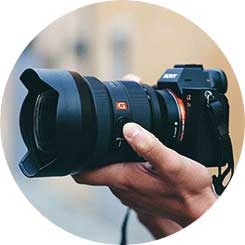
Trade in your old equipment
Fast and easy trade in service ensures your old gear is collected efficiently and you are paid quickly! It's very simple to trade in your unwanted photography gear. Just head over to our dedicated Sell or Part Exchange page, fill out the details, and we'll get back to you with an offer for your old gear. Take the cash, or put it towards the cost of your new gear. It's up to you! Find out more
sign up to the newsletter
Keep up to date on the latest photography news, events and offers. Sign up now